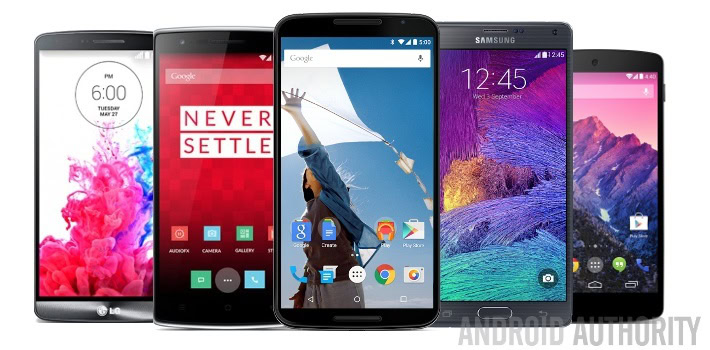Affiliate links on Android Authority may earn us a commission. Learn more.
Google on the Nexus 6: try it, you may like it

This just in: Google thinks you should give the Nexus 6 a try because chances are, you’ll end up liking it.
Once upon a time, the “enormous” Dell Streak lived in a world of its own: a 5 inch screen was unthinkable on a “phone” at a time when most weren’t even 4. Perhaps ahead of its time, consumer interest limited at best and sales never quite took off.
And so people gradually forgot about “large” phones, until Samsung’s Galaxy Note was announced. With a 5.3 inch screen, it seemed even more outlandish, but amazingly it caught on. Since then, just about every company under the silicon sun has gone on to release their own big screen device, which the media has affectionately branded a phablet. Disparaging remarks about looking foolish while talking or needing two hands to operate a big phone eventually began to subside, and even the most adamant detractors would finally released a Plus-sized product just last month.
Still, it was peculiar when Google’s Shamu began to circulate the rumor mill: a Nexus device made by Motorola with a six inch screen?! And yet, here we are on the edge of tomorrow, and it is no small claim to say Android users are not sure what to make of the gigantic Nexus 6. Google on the other hand, has already decided we all need it.

At a recent press event to show off everything Android, Google’s Vice President of Engineering, David Burke, fielded questions from the media. When asked about the substantial size of the new Lollipop reference device, the answer was quite clear: “If you gave them a phablet for a week, 50 percent of [consumers] would say they like it and not go back,” he told CNET.
“If you gave them a phablet for a week, 50 percent of consumers would say they like it and not go back.”
This reply may be the clearest explanation yet as to why Google decided upon such a radical departure for the Nexus phone line which, as of late, has been more associated with affordability and mainstream standards than the whale which its codename implies. One might argue that Google naturally wants to sell product, and convincing people they will like a phablet is essential to for the success of a $600+, 6 inch device when it releases next month. Yet, the funny thing is, Burke is probably right.
Find someone with Galaxy Note, LG G Flex, Sony Xperia Ultra, or any of the large phones out there. Ask them why they like such a device. Chances are, the reply will include things like ease of typing (larger keys), great for watching movies (big screen), longer use time (big batteries), and even a more comfortable experience (large hands).
Phablets are wonderful for those who want to do more with their phone than simply make calls, but who don’t feel like carting around a separate tablet. They often have features not present in normal phones, including multi-window options for true multitasking which may appeal to power users, and stylus input which is a boon to students, designers, or even a casual user who wants to annotate their latest selfie. Responding to criticism, some OEMs are now adding optional features such as ease of access shortcuts and settings to reduce the onscreen picture size so as to simulate a “smaller” 5 inch experience.
It’s no fluke that Samsung has sold well over 4 million Note 4’s in the few weeks since release. In fact, not only are phablets getting bigger and better, they’re also evolving as Samsung proved with its new Galaxy Note Edge. The curved display featured on this device allows an entirely new level of user customization and quick access.

Granted, there will be a learning curve: the size jump will inevitably require a short adjustment period as you learn how to handle such a large device, and become accustomed to the sheer size of it. But this was true of the initial jump from feature to smartphone, and even from 3.7 inches to 4.3.
Those who are quick to jump on Google for commissioning such a large device ought to spend some quality time with it to fully experience the ways in which a phablet can enrich the user experience and bridge the gap between phone and tablet. Especially in countries with customer-friendly return policies, what’s the harm in trying; there may be more to this craze than meets the eye.